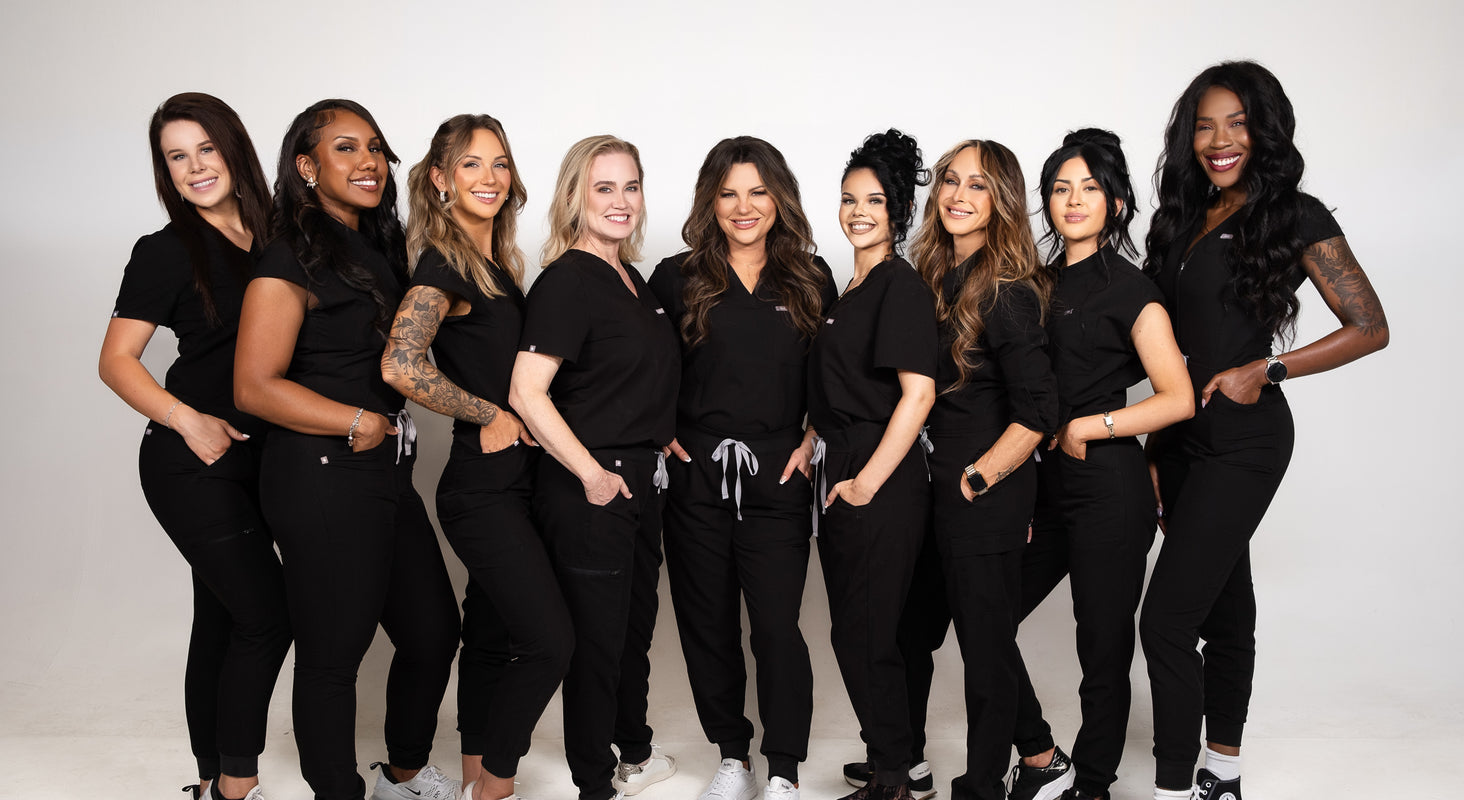
W-2 Employees vs 1099 Independent Contractors
Share
Key Differences and Tax Implications
In the aesthetics industry, whether a professional should be classified as a W-2 employee or a 1099 independent contractor largely depends on the nature of the work, the level of control a business has over the individual, and how the relationship between the worker and the business is structured. Understanding the difference between these two classifications is important for both employers and employees to ensure proper tax compliance, worker benefits, and overall business operations.
W-2 Employees vs. 1099 Independent Contractors: Key Differences
- W-2 Employee: An employee who works for a business and receives a regular paycheck with taxes withheld (federal, state, and FICA). The employer also contributes to Social Security, Medicare, unemployment insurance, and worker’s compensation on behalf of the employee. Employees are typically provided with benefits like health insurance, paid time off, and retirement plans.
- 1099 Independent Contractor: An independent business owner who is hired by a company to provide specific services. Contractors are responsible for paying their own taxes (self-employment taxes) and are not entitled to the same benefits as employees. They have more control over their work schedules, location, and how services are delivered.
When to Be a W-2 Employee in the Aesthetic Industry
In the aesthetics industry, W-2 employees are typically those who are working directly for a business, often under the control of an employer who sets the terms and conditions of their employment. Here are some roles that are likely to be classified as W-2 employees:
-
Spa or Salon Employees (Estheticians, Cosmetologists, etc.)
- Nature of work: Employees working in spas or salons often have regular hours, are provided with clients, and work under the direction of an employer who sets the schedule, provides tools and equipment, and manages the business.
-
- Benefits: These employees are often entitled to benefits such as health insurance, paid leave, and retirement plans, as well as workers' compensation.
-
- Control: The employer has significant control over the work environment, policies, services, and how the employees perform their duties.
- Front Desk Staff and Receptionists
-
- Nature of Work: These individuals are hired to manage bookings, greet clients, and perform other administrative duties that are integral to the day-to-day operations of a business.
-
- Control: They work on a set schedule, follow the employer’s protocols, and are paid on an hourly or salaried basis.
- Medical Estheticians (in a medical spa or dermatology practice)
-
-
Nature of work: Estheticians working under the supervision of a medical professional (like a dermatologist or plastic surgeon) are typically employees. They perform skin care treatments, laser procedures, and other treatments in a regulated medical environment.
-
Control: They often work under the direction of the business owner or medical professionals and are paid a salary or hourly wage.
-
-
Technicians Using Expensive Equipment (Lasers, Microneedling, etc.)
-
Nature of Work: Employees who operate complex equipment (like lasers for skin treatments) may be classified as W-2 employees because they are typically trained and certified by the employer and/or have specific responsibilities within a defined schedule and work environment.
- Control: The employer ensures that these employees have the necessary certifications, training, and follow safety protocols.
-
Nature of Work: Employees who operate complex equipment (like lasers for skin treatments) may be classified as W-2 employees because they are typically trained and certified by the employer and/or have specific responsibilities within a defined schedule and work environment.
When to Be a 1099 Independent Contractor in the Aesthetic Industry
On the other hand, many workers in the aesthetics field have more flexibility and control over their work, which may make them better suited to a 1099 independent contractor classification. These individuals typically provide services to multiple businesses, have greater control over their schedules, and work on a project-by-project basis. Here are some roles that are typically suited to 1099 independent contractors:
-
Freelance Estheticians or Makeup Artists
- Nature of Work: Freelance estheticians or makeup artists often work for themselves and provide services on a per-project or per-client basis. They may contract with various spas, salons, or event companies to offer their expertise for special occasions (e.g., weddings or photo shoots).
-
-
Control: They set their own hours, determine pricing, and are not required to follow specific company protocols. They may bring their own supplies or equipment, and they often operate with little supervision.
-
-
Independent Beauty Educators/Trainers
-
Nature of work: Beauty professionals who offer training courses, certifications, or workshops on various techniques in the aesthetic field, such as makeup artistry, skin care, or hair removal, may be considered independent contractors.
-
Control: They have control over their curriculum, pricing, and scheduling. They typically contract with training centers, beauty schools, or companies to offer their expertise on a temporary basis.
-
-
Freelance Lash Technicians
-
Nature of work: Many lash artists work independently, either renting space at a salon or operating their own businesses. They offer eyelash extensions and related services to clients based on their own schedules and pricing.
-
Control: Lash technicians generally have the freedom to choose their own hours, set their own rates, and provide their services in multiple locations.
-
-
Freelance Hairstylists
-
Nature of work: Similar to freelance estheticians, hairstylists may choose to rent a booth or work on a contract basis for salons. They are responsible for their own clients, schedules, and fees.
-
Control: Hairstylists can set their own prices, book their own appointments, and are not typically bound by a salon’s set hours or operational procedures.
-
-
Mobile Aesthetic Professionals
-
Nature of work: Some aesthetics professionals operate mobile businesses, where they travel to clients’ homes or workplaces to perform services like facials, massages, or beauty treatments.
-
Control: These professionals set their own work hours, decide their own pricing, and choose the areas they serve. They often work for themselves or under a broader contract, allowing them to maintain greater autonomy.
-
Factors That Determine Employee vs. Independent Contractor Status
The classification of W-2 vs. 1099 in the aesthetics industry depends on several key factors, which are outlined by the IRS and other governing bodies. These include:
-
Control over Work: A worker classified as an employee is generally subject to a greater degree of control by the employer, such as how, when, and where the work is performed. Independent contractors typically retain control over their schedule, methods, and work location.
-
Payment Structure: Employees are generally paid a regular salary or hourly wage, while independent contractors are usually paid per project or on a commission basis.
-
Work Relationship: An employee typically has an ongoing relationship with the employer, while an independent contractor is hired for specific projects or a limited period.
-
Tools and Supplies: Employees typically use tools and supplies provided by the employer, while independent contractors may provide their own materials or equipment.
_______________________
In the aesthetics industry, whether you are classified as a W-2 employee or a 1099 independent contractor depends on the nature of your work and the level of control exerted by the business you work with. W-2 employees are typically those who work under the direct supervision of an employer, with regular hours and benefits. On the other hand, 1099 independent contractors are usually self-employed, with greater autonomy over their work, including flexible hours, pricing, and location.
It’s important for both workers and employers in the aesthetics field to understand these distinctions to ensure proper tax reporting and compliance. If in doubt, consulting with a tax professional or legal advisor can help clarify the best classification for any specific role.
